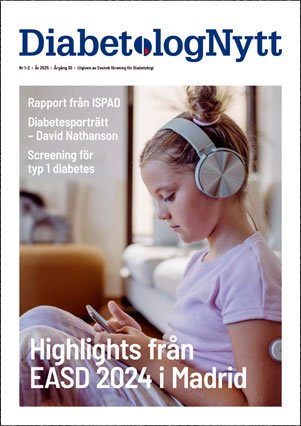STOCKHOLM, SWEDEN — Patients with type 1 diabetes undergoing CABG surgery have a more than twofold increased risk of death at 6 years compared with the general population undergoing CABG, according to the results of a new study[1].
In contrast, individuals with type 2 diabetes have only a slightly worse prognosis 6 years after CABG compared with those without diabetes who underwent surgery.
”Our data indicate that patients with type 1 diabetes mellitus are at high risk for adverse outcomes after CABG and should be closely followed up and that all possible measures to mitigate their risk of death or recurrent cardiovascular events should be instituted,” according to Dr Martin Holzmann (Karolinska University Hospital, Stockholm, Sweden), the lead researcher of a new analysis that included 39 235 individuals undergoing CABG surgery in Sweden.
In the study, published in the April 28, 2015 issue of the Journal of the American College of Cardiology, the researchers explain that multiple studies have looked at the impact of diabetes on clinical outcomes after CABG surgery, but these tend to lump diabetic patients into a homogenous subgroup rather than examine the impact of type 1 and type 2 diabetes separately. Type 1 diabetes is an autoimmune disorder that results in the destruction of β cells in the pancreas, which leads to insulin deficiency. Type 2 diabetes, on the other hand, typically occurs in adulthood and is characterized by insulin resistance and obesity.
Among those studied as part of the SWEDEHEART registry, the type 1 diabetic patients were significantly more likely to be female and had more comorbidities, such as chronic kidney disease, peripheral vascular disease, and heart failure, compared with type 2 diabetic patients and the general population. Type 1 diabetic patients also had the disease for significantly longer than type 2 diabetics.
After 5.9 years of follow-up, 21% of the 725 patients with type 1 diabetes who underwent CABG surgery had died. Of the 8208 patients with type 2 diabetes, 19% of patients died during follow-up. After multivariable adjustment, the risk of death for those with type 1 diabetes was increased more than twofold (hazard ratio [HR] 2.04; 95% CI 1.72–2.42) compared with nondiabetic patients while the risk of death was increased just 11% among those with type 2 diabetes (HR 1.11; 95% CI 1.05–1.18).
The association between type 1 diabetes and noncardiovascular mortality was stronger than the association with cardiovascular mortality, report the researchers.
In an editorial[2], Dr David Taggart (Oxford University Hospitals Trust, UK) points out that in an age-adjusted 10-survival analysis, 80% of patients without diabetes and with type 2 diabetes were alive after CABG surgery compared with just 40% of type 1 diabetic patients. ”And the main message of the study is that the ’low-hanging fruit’ is the need to focus on both the increased incidence of cardiovascular and noncardiovascular deaths in patients with type 1 diabetes mellitus,” he writes.
From www.medscape.com
References
1. Holzmann MJ, Rathsman B, Eliasson N, et al. Long-term prognosis in patients with type 1 and 2 diabetes mellitus after coronary artery bypass grafting. J Am Coll Cardiol 2015; 65:1644-1652. Abstract
2. Taggart DP. Impact of type 1 and 2 diabetes mellitus on long-term outcomes after CABG. J Am Coll Cardiol 2015; 65:1653-1654. Editorial
ABSTRACT
Long-Term Prognosis in Patients With Type 1 and 2 Diabetes Mellitus After Coronary Artery Bypass Grafting
Martin J. Holzmann, MD, PhD∗; Björn Rathsman, MD‡; Björn Eliasson, MD, PhD§; Jeanette Kuhl, MD, PhD¶; Ann-Marie Svensson, PhD#; Thomas Nyström, MD, PhD∗∗; Ulrik Sartipy, MD, PhD††
J Am Coll Cardiol. 2015;65(16):1644-1652. doi:10.1016/j.jacc.2015.02.052
Abstract
Background Patients with diabetes mellitus (DM) have an increased risk of adverse outcomes after coronary artery bypass grafting (CABG). Previous studies have reported prognosis in relation to treatment with or without insulin, and not to the type of diabetes.
Objectives This study investigated long-term survival in patients with type 1 DM (T1DM) and type 2 DM (T2DM) following CABG.
Methods We included all patients from the SWEDEHEART (Swedish Web-System for Enhancement and Development of Evidence-Based Care in Heart Disease Evaluated According to Recommended Therapies) register who underwent primary isolated CABG in Sweden during 2003 through 2013. We identified patients with T1DM or T2DM in the Swedish National Diabetes Register. We calculated hazard ratios (HRs) with 95% confidence intervals (CIs) for all-cause mortality in patients with T1DM or T2DM.
Results In total, 39,235 patients were included, of whom 725 (1.8%) had T1DM and 8,208 (21%) had T2DM. Patients with TDM1 were younger (59 vs. 67 years), had reduced kidney function (31% vs. 24%), and had peripheral vascular disease (21% vs. 11%) more often than patients with TDM2 or no diabetes. During a mean follow-up of 5.9 ± 3.2 years (230,085 person-years), 6,765 (17%) patients died. Among patients with T1DM, 152 (21%) died, and among patients with T2DM, 1,549 (19%) died. Adjusted hazard ratio (95% confidence interval) for death in patients with T1DM and T2DM, compared with patients without diabetes, were 2.04 (1.72 to 2.42), and 1.11 (1.05 to 1.18), respectively.
Conclusions Patients with T1DM had more than double the long-term risk of death after CABG compared with patients without diabetes. The long-term risk of death in patients with T2DM was only slightly increased.
Diabetes and Prognosis After CABG
Outcomes in 39,235 patients who underwent primary isolated coronary artery bypass grafting (CABG) in Sweden between 2003 and 2013, according to type of diabetes.
Note: Hazard ratios for CV death, non-CV death, and repeat revascularization are subdistribution hazard ratios. Death+MACE is defined as a combined endpoint of death, or rehospitalization for myocardial infarction, heart failure or stroke, or repeat revascularization. CI = confidence interval; CV = cardiovascular; MACE = major adverse cardiac event(s); Ref = reference category.
Nyhetsinfo
www red DiabetologNytt





